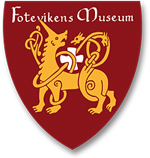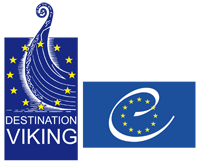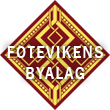The history of the museum
Foteviken Museum, which was created in 1995, is a public institution and a municipal museum in Vellinge Municipality. The museum is a referral body of archaeological affairs in the municipality.
Foteviken Museum with its Viking town is an archaeological open air museum, with experimental archeology and living history as the main task. In Europe, this type of museums are known as "Archaeological Open Air Museum". Their status as a museum controlled by the worldwide museum organisation ICOM of July 9th 1956.
«The title "Open-air-museum" cannot be denied to a museum of which the buildings, completely or partially, as copies or true to scale reconstructions are rebuilt after original patterns, are properly furnished and open to the public." These concessions can be made only under the condition that: "the original buildings of the type portrayed are no longer available and copies or reconstructions are made according to the strictest scientific methods.»
*the thee founding organisations*
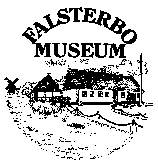
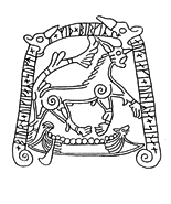

The history of Fotevikens Museum
In 1995, the Foteviken Museum was established as a municipal museum. The mission was to put focus on the Vellinge Municipality’s Viking age and the maritime history along the municipality’s coastal landscapes and coastal waters. The mission was later redefined to include a wider area. The main areas today are:
The Viking ages and the Middle Ages history with the starting point in Scania.
Bringing the history to life and conveying our cultural heritage to a wide audience.
The passing of our knowledge in an informative and thorough manner, including via modern digital technology.
The museum business was developed from the archaeological activities that the SVEG association (Scandinavian Viking Explorer Group) built up during the 1980’s and whose work developed into a cultural pilot project and a cutting edge for southern Sweden’s marine archaeology.
In 1993, the orgqaisation was established. The roots for the establishment already existed in the SVEG association with its chairman Björn M Jakobsen. Other partners were the Falsterbo Peninsula Museum Organisation and the Vellinge Municipality. In the beginning, the work was defined to spread knowledge about the Nordic Viking ages and to developing the Maritime archaeology. After the marine archeology in 1999 moved to Malmö museums have the subject area substantially been reduced and the Foundation has now ceased.
In 1995, The Foteviken museum was founded and Björn M Jakobsen became the museum director. The same year the former museum director for Malmö, Sven Rosborn joined as the head of information and research at the museum and as a scientific representative on the board at the organisation.
Vellinge Municipality allocated an approximately 70,000 square meters of land at Höllvikens northeastern shore for the museum's activities. In 1997, the planning and construction of the Viking town, an archaeological open air museum, had begun and is so far the worlds first and only attempt to recreate a Viking town, based on the archaeological findings and historical source materials. Here we got the opportunity to develop the experimental archaeology with the goal to bring the Vikings history to life.
1999. After being the initiator to- and helped with the constructing of the Scanian maritime archaeology, Fotevikens Museum handed over the responsibility to Malmö Culture department. The museum then focused on the visualisation of the maritime history for a wider public. The museum initiated the building of two cogs after medieval models. The project, which was located in Malmö but led by the Foteviken Museum, became the largest medieval project for over six years in Scandinavia. The Viking environment grew in the meanwhile in the Viking town. At the same time the Viking exhibition environments in the Viking town grew steadily.
To conduct its own research and learn from others research much form the backbone of this type of activity, to physically bring our heritage to life. Despite the limited resources, the museum conducts a great deal of work in this field. The project “Malmö 1692” is one example of many. This project initiated and carried out by the museum’s research department under a number years. It has been possible to digitally recreate the 1600’s Malmö with the use of all historically known sources until 2007. The project is completely unique, even seen from a European perspective.
Fotevikens Museum has also frequently participated in and led many EU project in the past 10 years. Read more in http://project.foteviken.se/
Sponsors
A large number of sponsors have contributed to the construction and development of the museum over the years:
